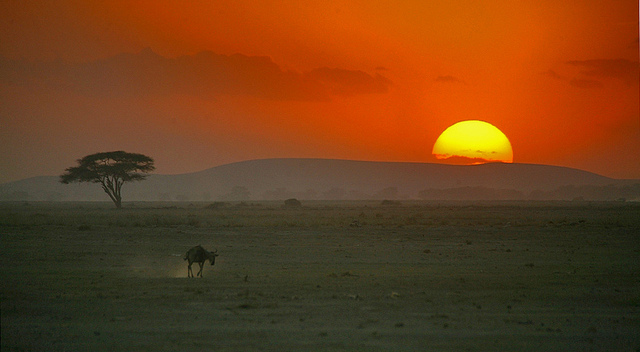
It’s no surprise that Homo sapiens dominates the Earth. After all, we’re resourceful, social, and smart. No, the surprise is how we did so in just 50,000 years. Such a pace is unprecedented, especially for a long living, slow reproducing species such as ours. Intelligence and opposable thumbs certainly helped, but we aren’t the only ones who can use a tool or solve a puzzle. Rather, a peculiarity of our social nature may be what has set us apart, allowing us to live in nearly every biome on Earth.
The exact mechanics of how sociality fostered our dominance are fuzzy. Myriad archaeologists and anthropologists work hard to resolve those uncertainties, but history is vast and their resources are comparatively small. There is another option, though, one that relies on mathematical machinations and close study of the characteristics of modern day hunter-gatherer groups. Using those methods, a group of anthropologists and biologists think they may have solved part of the migratory riddle. Our predisposition to living densely, they suppose, may have contributed to our stunning success beyond the savannas of Africa.
A sublinear relationship between population size and home range size—meaning that larger groups live at higher densities—imparts special advantages for species that can deal with the twin burdens of density, overshoot and social conflict. Overshoot describes a population that overwhelms its habitat, devouring all available food and otherwise making a mess of the place. Social conflict is as it sounds, where tight proximities provoke fights between individuals. Together, those snags can bring a once booming population to it’s knees.
But social animals are uniquely adapted to cope with those problems. For one, social behavior soothes tensions when they do rise. And when it comes to the necessities of life, density conveys a distinct advantage for social species—resources, chiefly food, become easier to find. Larger, denser populations squeeze more out of a plot of land than an individual could on his or her own.
Density itself wasn’t directly responsible for the first forays out of Africa. Those groups were were too small and dispersed to receive a substantial boost from density. They faced the worst the natural world had to offer, and many probably couldn’t hack it.
Where population density conferred its advantages was when subsequent waves of colonizers followed. Density allowed those people to thrive. They joined the initial groups, growing more populous and drawing more resources from the land. This made groups more stable both physically and socially—full bellies lead to happier and healthier people. As each group’s numbers grew larger, their social bonds grew stronger and their chances of regional extinction plummeted. In other words, once people worked together to establish themselves, they were likely there to stay.
It’s a heartwarming story the scientific paper tells in the unsentimental language of mathematics. It implies that the essential success of our species can be boiled down to one variable, β, and one value of that variable, ¾. The variable β is an exponent that describes how populations scale numerically and geographically. Its value of ¾ is significant. When β equals one or greater, each additional person requires the same amount of land or more—the group misses out on density’s advantages. But when β is less than one—as it is in our case—then a population becomes denser as it grows larger.
The degree of our sociality has allowed us to bend the curve of population density in our favor. If early humans had been an entirely selfish species—each individual requiring as much or more land than the previous—β would be equal to one or greater. We wouldn’t have lived at higher densities as our populations grew, and early forays beyond the savanna might have petered out. Instead of conquering the globe, we’d have been a footnote of evolution.¹
And here is where we can consider how this affects our modern lives. Population density may have aided our sojourn out of Africa, but it’s clear there are limits. Hunter-gatherer populations appear to be limited to around 1,000 people, depending on the carrying capacity of the ecosystem. Technology has raised carrying capacities beyond that number—as evinced by the last few millennia of human history—but we don’t know it’s limits. A scaling exponent equal to ¾ may have helped our rise to dominance, but it also could hasten our downfall. Technology may be able to smooth the path to beyond 7 billion, but what if it can’t? What if ¾ is an unbreakable rule? What happens if we reach a point where density can no longer save us from ourselves?
—
¹ I might point out here that β=¾ could tell us something about the viability of libertarianism, but that’s a subject for another post.↩
Source:
Hamilton, M., Burger, O., DeLong, J., Walker, R., Moses, M., & Brown, J. (2009). Population stability, cooperation, and the invasibility of the human species Proceedings of the National Academy of Sciences, 106 (30), 12255-12260 DOI: 10.1073/pnas.0905708106
Photo by lukasz dzierzanowski.
Related posts:
Hunter-gatherer populations show humans are hardwired for density
The curious relationship between place names and population density